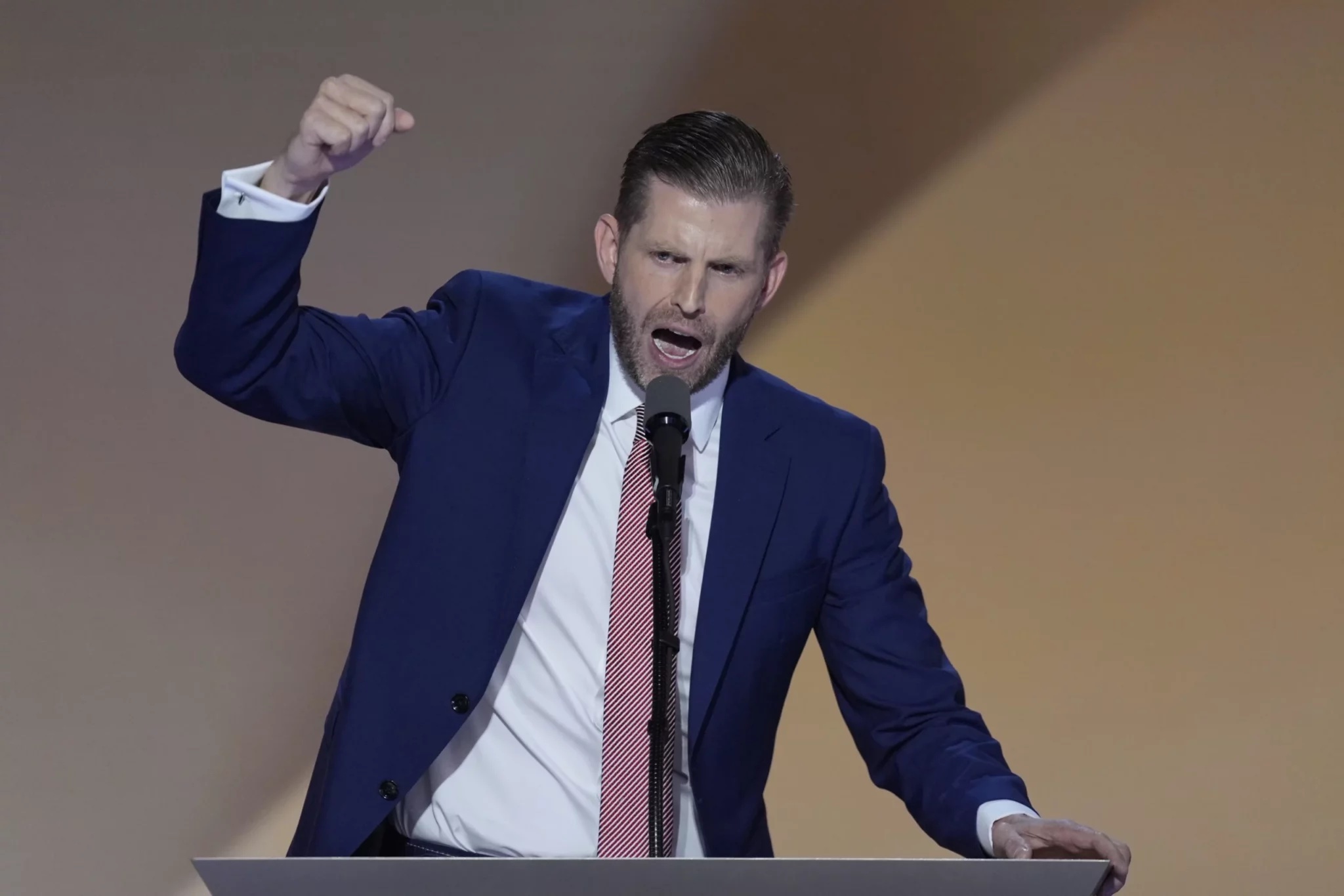Eric Trump Warns Traditional Finance to Embrace Crypto
03.03.2025 16:00 1 min. read Alexander Zdravkov
Eric Trump recently warned traditional finance to adapt to cryptocurrencies or risk becoming obsolete, following his father Donald Trump’s announcement of a U.S. Strategic Crypto Reserve (SCR).
The news, shared on Truth Social, sent digital assets soaring, with Bitcoin rising 10% to over $94,000, Ethereum up 13%, and Cardano’s ADA increasing 60%.
Trump clarified that the reserve would include Bitcoin, Ethereum, and others like XRP, Solana, and Cardano, distinguishing it from previous ideas of merely stockpiling seized crypto.
I love the genius of announcing a strategic reserve on a Sunday, when traditional markets are closed and Wall Street sleeps. For the first time, retail investors win. Traditional finance better catch up, or it will quickly become extinct. The world no longer runs on a Mon-Friday,… pic.twitter.com/EPtbEisbdI
— Eric Trump (@EricTrump) March 3, 2025
He emphasized that the move counters years of negative regulation and aims to stabilize the industry.
Reactions from the crypto community are mixed. While some view the SCR as a positive step, others are concerned about the government’s control over crypto and which assets are chosen for the reserve.
Critics worry it could destabilize the U.S. dollar or be liquidated by future administrations. As the market reacts, all eyes are on the upcoming White House Crypto Summit for further details on the reserve’s operation.
-
1
Chinese Tech Firms Turn to Crypto for Treasury Diversification
26.06.2025 17:00 1 min. read -
2
FTX Halts Recovery Payments in 49 Countries: Here Is the List
04.07.2025 18:00 2 min. read -
3
What Are the Key Trends in European Consumer Payments for 2024?
29.06.2025 8:00 2 min. read -
4
What Brian Armstrong’s New Stats Reveal About Institutional Crypto Growth
29.06.2025 15:00 2 min. read -
5
Here is Why the Fed May Cut Rates Earlier Than Expected, According to Goldman Sachs
08.07.2025 15:00 2 min. read
U.S. Public Pension Giant Boosts Palantir and Strategy Holdings in Q2
According to a report by Barron’s, the Ohio Public Employees Retirement System (OPERS) made notable adjustments to its portfolio in Q2 2025, significantly increasing exposure to Palantir and Strategy while cutting back on Lyft.
Key Crypto Events to Watch in the Next Months
As crypto markets gain momentum heading into the second half of 2025, a series of pivotal regulatory and macroeconomic events are poised to shape sentiment, liquidity, and price action across the space.
Here is Why Stablecoins Are Booming, According to Tether CEO
In a recent interview with Bankless, Tether CEO Paolo Ardoino shed light on the growing adoption of stablecoins like USDT, linking their rise to global economic instability and shifting generational dynamics.
U.S. Dollar Comes Onchain as GENIUS Act Ushers in Digital Era
In a statement that marks a major policy shift, U.S. Treasury Secretary Scott Bessent confirmed that blockchain technologies will play a central role in the future of American payments, with the U.S. dollar officially moving “onchain.”
-
1
Chinese Tech Firms Turn to Crypto for Treasury Diversification
26.06.2025 17:00 1 min. read -
2
FTX Halts Recovery Payments in 49 Countries: Here Is the List
04.07.2025 18:00 2 min. read -
3
What Are the Key Trends in European Consumer Payments for 2024?
29.06.2025 8:00 2 min. read -
4
What Brian Armstrong’s New Stats Reveal About Institutional Crypto Growth
29.06.2025 15:00 2 min. read -
5
Here is Why the Fed May Cut Rates Earlier Than Expected, According to Goldman Sachs
08.07.2025 15:00 2 min. read


